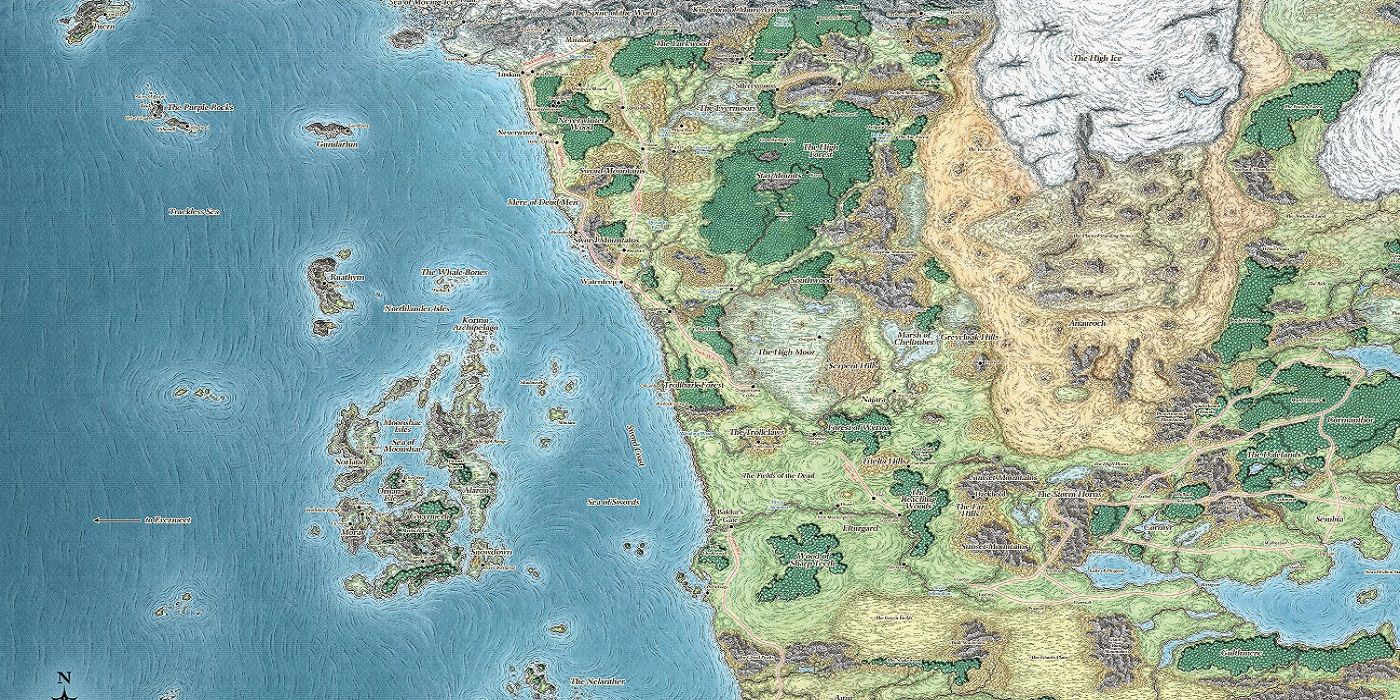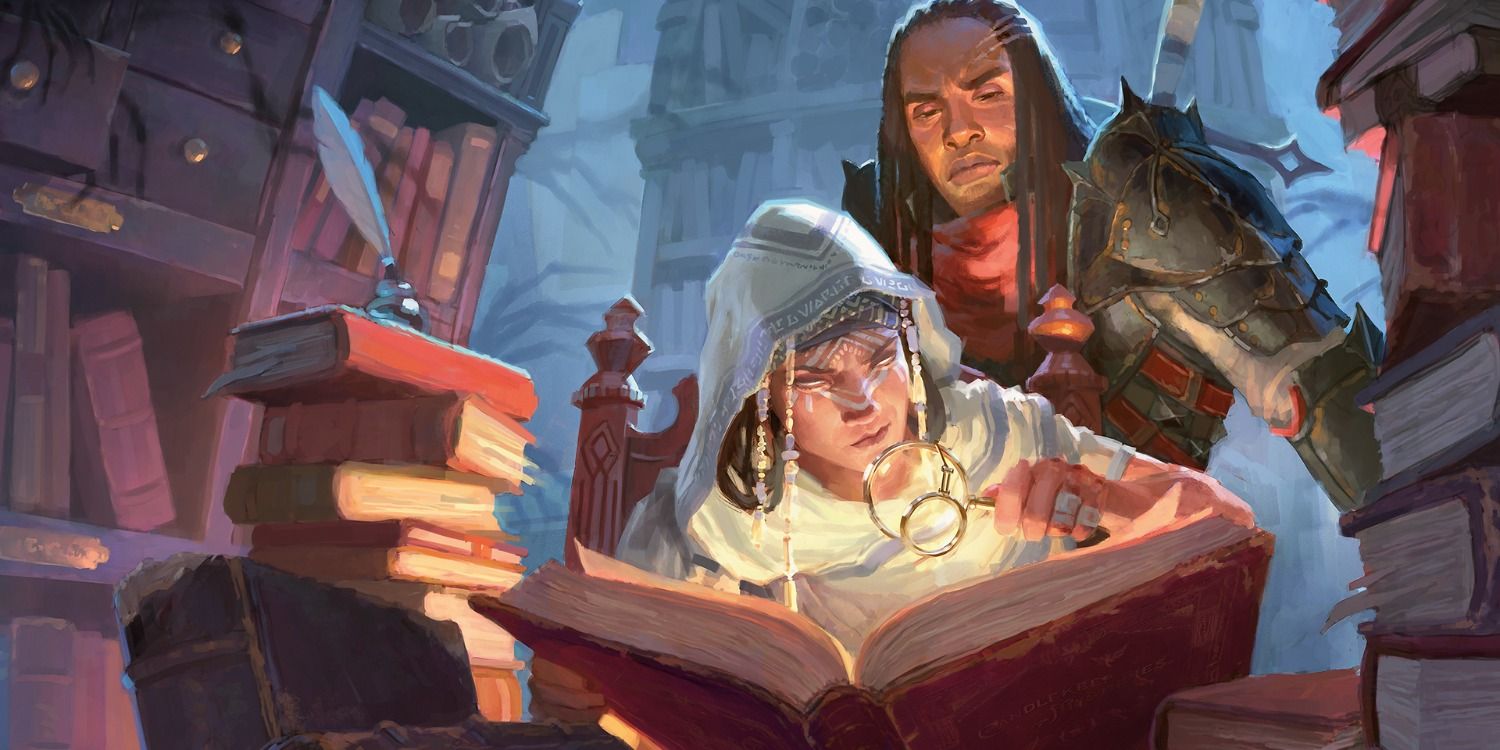Objectives can be scattered all across the world in a Dungeons & Dragons campaign. A party may need to travel to a number of kingdoms, sail from one end of a continent to another, or travel through harsh landscapes to find a remote town or temple. To help ensure they know where they are going, the use of a map in D&D is essential. While it may seem obvious that maps of a continent or kingdom will be needed, maps actually play a much bigger role in most campaigns. D&D maps are needed to explore towns, churches, or even simple Inns. This is to help players visualize their location and orient themselves to other nearby spaces. While Dungeons & Dragons sourcebooks may provide many of these maps, it isn't uncommon for a Dungeon Master to require special maps, and often they will need to build these themselves.
Whether playing online with the help of D&D websites like Roll20 or DnDBeyond, or sitting in a room to play together, players will often times be working with a map of their location provided by their DM. On these maps, painted mini-figures or tokens will mark playable character locations, influential NPCs, or discovered battle encounters. DMs can also mark important locations for story objectives or side-quests. Maps of rooms or buildings will show distance using a grid, with each square acting as a measure of anywhere from 5 to 50 feet. These measures are particularly important during Dungeons & Dragons combat, when movement affects the ability to avoid attacks, land blows, or determine casting distances for magic.
Building a map in Dungeons & Dragons isn't an easy undertaking. Whether the DM decides to draw the map by hand on graph paper, or build using digital tools like Wonderdraft or Dungeondraft, map creation takes a lot of time, energy, and research. Thankfully, there are numerous tutorials available on sites like Reddit and YouTube to help walk new map builders through the use of popular map building software and how to understand the geography needed to make maps realistic. Many of these software options have interesting features to make maps more aesthetically pleasing, like lighting effects, greenery, and decoration options. Some even have drawings of animals and people to help give a map's space a specific atmosphere. There is nothing like having the option to add skeletons to the floor of a hand-made D&D boss dungeon to help build the tension before an encounter.
Situations To Build New Maps In A Canon D&D Campaign
Dungeons & Dragons campaigns are each unique, even if a popular setting or campaign is being used. The creativity of each individual player, and the storytelling of the DM for the campaign, will shape each playthrough into its own one-of-a-kind adventure. Because of this, it isn't uncommon for sourcebook-provided D&D maps to become obsolete. If a party playing The Curse of Strahd helps rebuild the Blue Water Inn after it has been damaged, the inn could look drastically different than the original sourcebook's description. If the location is important, and the players are likely to come back to it frequently, the DM may need to consider building an up-to-date map for players to reference.
Another instance in which a new map might be needed is if a non-canon area is added to the campaign. Examples of these situations include the party straying off the beaten path and into a location lacking detail in the sourcebook, or the Dungeon Master wanting to expand an NPC who doesn't have a home or a workspace. The Dungeons & Dragons DM might make an abandoned house in the woods for the party to explore, or add a roadside tavern to act as a stopping point for a long rest. For these situations, a DM can choose to build their own map, or use sources provided online by other Dungeon Masters who have shared prebuilt maps for just such occasions.
Map Building For Homebrew Dungeons & Dragons Campaigns
The most complicated form of Dungeons & Dragons campaign building is the use of Homebrew. Whether the DM is using information for a pre-built Homebrew campaign, or they have chosen to build a fantasy world from scratch, homebrew campaigns can require extensive map making. A D&D campaign based on Lord of the Rings will need maps for each important location the party will visit, and a Harry Potter-inspired homebrew will need maps of the school grounds and any other locations the party might visit. However, building D&D campaigns based on existing fantasy settings offers the DM something to start with when fleshing out the homebrew maps.
Unlike existing settings, building an entirely unique D&D story is another challenge entirely. DMs embarking on the harrowing task of original world-building will find themselves creating everything from the overworld map to each important location in the story from scratch. While generic pre-built maps can be used, or modified for simple locations, more important buildings, dungeons, and areas could take hours, or even months to properly flesh out for active gameplay. Because of this, original content homebrew can be one of the more intimidating types of D&D campaigns to run.
For Dungeon Masters preparing to embark on the challenging task of map building, there are a few tips to make the process less daunting. Using pre-built resources as examples when first learning to put together spaces will help provide a reference for how to distance buildings, objects, and rooms within a location. It is also important to make sure to plan D&D sessions accordingly to minimize the stress of session prep. A few extra days between play-sessions will allow the time needed to create the resources without overworking the DM or taking away time to prepare for the next session, ensuring enjoyable gameplay. Most importantly, when in doubt, draft it out. Sketching a few thumbnail maps before sitting down to puzzle out complicated map software will provide the groundwork for an area, and make building this new Dungeons & Dragons location less stressful.
Source: Wonderdraft, Dungeondraft



